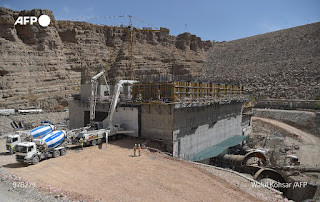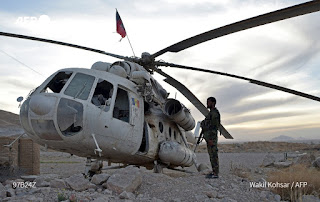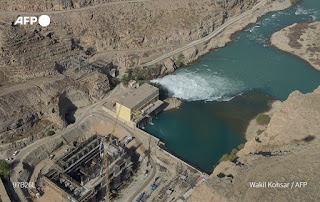Struggle for power on the Afghan front over the Kajaki Dam between Government and Taliban's
Struggle for power on the Afghan front over the dam The Kajaki Dam supplies electricity to more than three million people in South Tange, a trading village.
It was largely destroyed by fighting and is now largely abandoned. The dam is entirely dependent on helicopters.
The dam was built by an American company to control water flow for farmers Security guards monitor the area from remote outposts. There are no more than thirty families in Tange, and only a handful of stores are open.
The dam was built by an American company to control the flow of water for farmers in the heart of the besieged area , one of the most important dams in Afghanistan, are at the center of a power struggle that symbolised the struggle between the government and insurgents.
The Kajaki Dam, which supplies electricity to more than three million people in the south, including the cities of Kandahar and Lashkar Gah: is controlled by government forces.
Exceptional engagement, however, results in the authorities effectively allowing surrounding insurgents to incriminate locals for energy. This type of engagement could become more common as U.S. forces withdraw, leaving local government officials and local government officials behind. Taliban commanders are finding ways to reluctantly live with the status quo even when their leaders cannot agree on terms.
"It's not our choice. How can we deny them electricity?" Ghulam Raza, a senior executive at 77 Construction, a Turkish company working to triple the capacity of the dam, told AFP during a recent visit by factory officials that around a fifth of production is used by Taliban controlled kajaki districts.
Sangin and Musa Qala. There are hundreds of villages and hamlets in the areas that are home to thousands of people. Insurgents tax locals every month for the electricity they use, said Abdul Razak, nominally the governor of the Kajaki district, but whose authority barely extends beyond his office and some buildings around the dam.
This tacit deal does not prevent the Taliban from constantly attacking the troops protecting the dam, and civilians trapped in the middle pay a heavy price. "This electricity costs too many lives," said the governor. he told AFP.
Still, hundreds of tons of construction materials and equipment have to be transported, and local workers at the dams, mostly from Taliban-controlled areas, require two permits. "I have a Taliban paper and a government ID." "said the worker Mohammad Akbar.
The mechanic Mohammad Daud also crosses the front regularly, a journey that is becoming more and more dangerous." It used to take ten minutes, but because of the uncertainty, it now takes four hours, "he said." I am very scared. Another worker, Sardar Mohammad, says he will alert both sides in advance if he has to cross the front line, but that is not always enough.
"They shot from this outpost," he said, describing how a colleague from the Afghan government was shot from a nearby hill. - Frontdorf - The officials at the Turkish construction company know they are better off than the troops protecting them.
"The Taliban ...77 and the projects because they benefit everyone, "said Adel Badloon, a logistics officer. The likelihood that the developers will leave the site if the Taliban capture the Kajaki dam could explain why the insurgents are not making a bigger effort Walk from the dam complex to outposts farther away. "If you are 10 meters from the road, they will shoot you," said Army Commander .



Post a Comment
Don't allow spam link